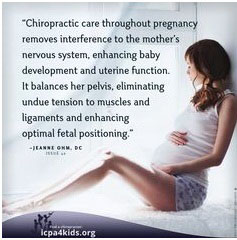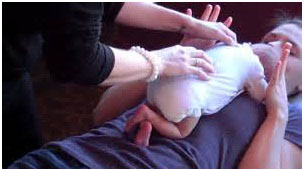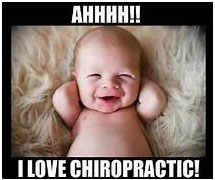Family
Prenatal chiropractic care treatment options
It is very common for the pregnant women to have spinal and pelvic related pains, but it doesn’t mean those pains are normal, or that you have to deal with them on a daily basis. Every pregnancy is slightly different, which means every expecting mother will experience different kinds and levels of pain. Woman’s bodies go through many changes during those 40 weeks, and some of them can cause aches and pains throughout your body. A number of those changes are more physical, like the increased weight and change in your center of gravity, but others are hormonal. Those hormonal changes begin in the first trimester and cause differences in your ligaments and tendons right off the bat. This is the time most women are complaining of headaches and SI pain. As your baby grows, pain begins to develop in the front of your growing belly at the round ligament (attaching the uterus to the abdominal wall) and can occasionally cause numbness and tingling down one or both legs. Muscle tightness and tension is almost always a complaint.
- Low back and neck pain
- SI pain
- Sciatica
- Headaches
- Round ligament pain
- Muscle tension
- Numbness in feet and hands
- Hip pain
- Buttock pain
All of these symptoms can be addressed with chiropractic care. We use a variety of techniques to level your pelvis and release muscle tension that will have you feeling better than you could believe.

Pediatric Chiropractic
Is Chiropractic care safe for a child?
Recent studies have shown that up to 14 percent of chiropractic visits are for pediatric patients and that chiropractors are the most common non-medical provider visited by children. According to a survey by the Centers for Disease Control and Prevention (CDC), more than 2 million children visit a Chiropractor every year.
In general, the Chiropractic adjustment is a very safe procedure for children. With millions of children visiting a chiropractor every year, adverse events (the technical term for injury) are very rare. A study published in 2008 in the prestigious Medical Journal of Pediatrics found only two incidents of adverse events related to spinal adjustments in children worldwide over the past 100 years, an enviable safety record.
Chiropractic care provided at our clinic for children is very different than chiropractic care for adults. The adjustments are much softer and gentler because the child’s joints are looser and easier to move. The procedure is quite comfortable and children often look forward to their chiropractic treatment. In addition, children generally heal much more quickly than adults, so they typically require just a few treatments to restore normal function to their nervous systems and related organs.

What pediatric conditions can a Chiropractor help?
A Chiropractor can help children heal and attain true health by releasing joints that aren’t moving properly or to their fullest capacity. This restores natural nervous system function, correcting symptoms at the root of the problem and optimizing the child’s overall health and inherent healing abilities.
If your children aren’t already receiving Chiropractic care, talk to our experienced chiropractors about getting them into the office for an initial consultation visit.
Common Pediatric Conditions That Respond Well to Chiropractic Care
 Newborn and Infants:
Newborn and Infants:
- Colic/irritability
- Poor sleep
- Nursing problems
- Reflux/spitting up
- Constipation
- Torticollis/head tilt
- Sleep apnea or snoring
- Asymmetrical crawl or gait
Toddler and PreSchoolers:
- Ear infections
- Chronic upper respiratory infections
- Asthma
- Growing pains/foot or leg cramping
- Bed-wetting
- Incontinence (bowel or bladder)
- Pervasive development disorders*
- *including autism, sensory integration disorder, ADD, ADHD, learning disabilities
School Aged and Adolescents:
- Back pain
- Neck pain
- Headaches
- Scoliosis
- Gait abnormalities
- Poor Posture
- Extremity injuries (chronic ankle sprains, knee pain, shoulder pain, etc.)
- Constipation
- Abdominal pain
- Chronic upper respiratory illness


